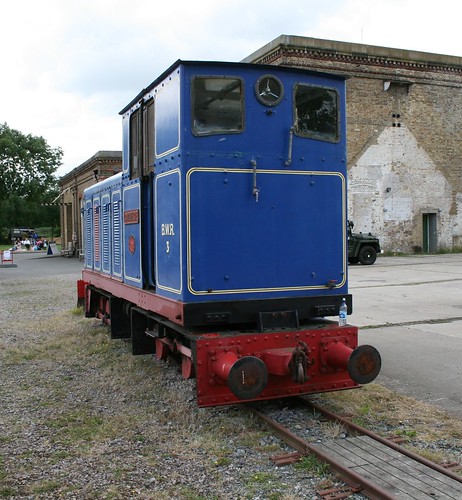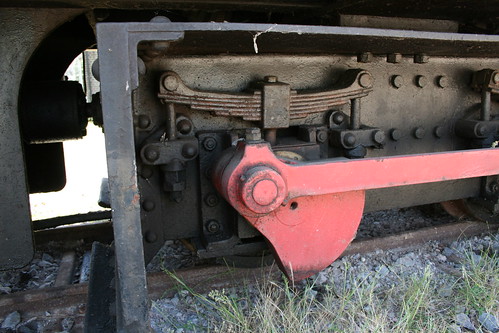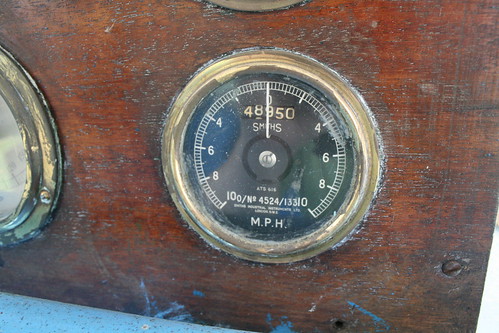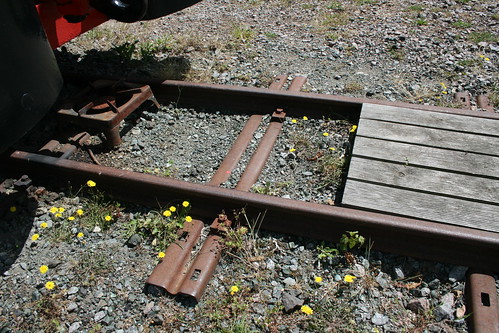Carnegie – "want" update
carnegie diesel hunslet inspiration narrow-gauge photos prototype wantedA couple of weeks ago I had the opportunity to go to Gunpowder Mills in east London with a friend to photograph and measure Carnegie, the articulated Hunslet diesel built for the 18″ gauge system at the Royal Arsenal in Woolwich. The loco is usually on static display, and my friend was able to arrange access to the usually closed off cab and permission to generally clamber over the thing. We captured a lot of detail, which will be a boon to modelling projects, and thanks are due to the guys at Gunpowder Mills for their help.
Previously I thought that the generous size of Carnegie meant it would probably pass as a 2′ gauge engine. In fact that might not be so easy, as although it’s large in most directions it’s pretty narrow – with an overall width of just over 5′. So there isn’t a whole lot of room
in the bogies to push the frames and coupling rods further out. In modelling terms this would means either a dedicated 18″ gauge layout, or compromising on some aspect of the design to fit a wider gauge. My answer to that isn’t clear quite yet!
What else to say about the loco? It was great to be able to take some really detailed photos of how it all fits together and aspects of railway engineering in general. In the photo above you can see a close up of the front power bogie, coupling rods and suspension. It wasn’t until I studied this picture that I started to understand how hornblocks and leaf springs combine to form a suspension system and the advantage of replicating this in a model, especially in larger scales. On the far left of the picture is a glimpse of the flexible cardan shaft which transmits power from a central gearbox to the bogies. This arrangement is increasingly common in modern model diesel locos where all axles are driven from a central motor.
From photos I saw before the visit, it looked like the panelling over the cab side windows was a makeshift arrangement for security. In fact, once we had access to the loco we discovered they were the original shutters which although looking like kitchen cabinet doors can be slid open from inside.
Despite its impressive looks Carnegie is only geared for a maximum speed of 8mph, although as the speedometer shows it is equally fleet footed in forward or reverse. The mileage recorded I assume includes its time at the Bicton Woodland Railway in Devon as well as at Woolwich. It is hoped the loco will run again at Gunpowder Mills one day, although it needs repairs the rear bogie gearbox.
Also on site is another ex-Woolwich loco, the eponymous Avonside 0-4-0T. Woolwich came to Gunpowder Mills via Bicton as well, which now operates with modern steam-outline diesel locos.
A final interesting detail is that the 18″ gauge line has been built from Hudson (or similar) portable track components cut down from 2′. You can see the original bolt holes in the metal sleepers outside the rails.
There are plenty more photos of Carnegie and a few more of Woolwich and various items of 18″ gauge stock in my Flickr set.
- Previous: Scale strategy
- Next: Live(ish) from Flickr





